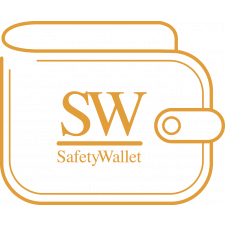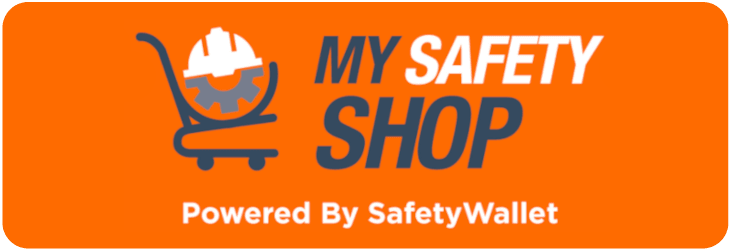Health and Safety Risk Assessment Audit
Overview
Risk assessments are a crucial and vital management tool used to ensure health and safety of employees and others that may visit and enter the premises. Employers are legally responsible for ensuring a healthy and safe workplace and a risk assessment is the best way to ensure compliance.
Health and safety risk assessment audits are also a vital part of the process, ensuring that the risk assessment is relevant and that the control measures are still valid. However, before exploring this, it is important to examine the components of the risk assessment from start to finish.
What is a Risk Assessment?
A risk assessment can simply be defined as the systematic process involved with hazard identification and evaluation of any associated risks within a given workplace, followed by the implementation of control measures to either remove the hazards or reduce the risk of harm.
When a risk assessment is carried out, the following keywords and their definitions are important:
- An accident is an unplanned event which results in loss.
- A hazard is anything that has the potential to cause harm.
- A risk is the likelihood that harm can occur along with the severity thereof.
Types of Risk Assessment
There are several types of risk assessment which are required in the workplace and they must be proportionate and relevant to the operations and tasks being carried out. In numerous industries there are specific legal requirements that apply, dictate, and direct the risk assessment procedure.
Some of the common risk assessment types include, but is not limited to:
- Baseline Risk Assessments
- Issue-based Risk Assessments
- Fire Risk Assessments
- Continuous Risk Assessments
- Manual Handling Risk Assessments
- Health Surveys and Risk Assessments
Why are Risk Assessments important?
When an effective and suitable risk assessment is completed, it serves as a crucial management tool in effective risk management. It is a legal requirement that employers provide a healthy and safe workplace and thus, risk assessments form an integral part of the health and safety management programme.
Risk assessments are straightforward, and they are a structured method to ensure that risks to health, safety, and wellbeing of employees, and others, are suitably eliminated or reduced, and controlled.
The main purpose of a risk assessment is:
- To identify health and safety hazards and to evaluate the risks that are present in the workplace.
- To evaluate both the effectiveness and the suitability of existing control measures.
- To ensure that additional controls are implemented where the remaining, or residual, risk is anything but low.
- To place emphasis on further resources that may be needed to ensure the above.
Who is responsible for completing a Risk Assessment?
The employer is legally responsible to provide a healthy and safe workplace and thus the responsible party to carry out a risk assessment. However, this responsibility can be legally delegated, in writing, to a competent person who has the knowledge, skill, training, and experience to do so.
Once the hazard identification has been completed, the associated risks must be evaluated, and steps identified and taken to minimise the potential effects. The next step is for the employer to clearly communicate the risk assessment process and the content thereof to relevant parties.
The process involved with communication is more effective if the relevant persons are involved with the risk assessment process at each stage. The person who is carrying out an activity is typically best placed to offer details and information on the associated hazards as well as risks involved, thus they must participate in the risk assessment.
When must a Risk Assessment be completed?
Risk assessments are required before a specific activity or a task is carried out so that any risks to the health, safety, and wellbeing of the employees involved can be eliminated, reduced, or suitably controlled.
Once the risk assessment has been completed, it is crucial that it is reviewed periodically or in any case when either the current assessment is invalid, or if at any stage, there are significant changes to the specific activity, task, or the workplace/work environment.
Relevant risk assessments must be reviewed after an incident, accident, injury, occupational disease/illness, or near miss has occurred. This will verify that the control measures and the level of evaluated risk is still appropriate and identify whether additional, adjusted measures are needed.
How is a Risk Assessment carried out?
Even though there is no set guideline on how a risk assessment must be carried out, the following five basic steps can be followed to ensure that the risk assessment is suitably comprehensive:
- Step 1 – Identify the potential hazards in the workplace that have the potential to cause harm.
- Step 2 – Identify who may be harmed by the hazards and how by classifying employees into groups.
- Evaluate the risks by considering the likelihood and severity and establish suitable control measures for each.
- Implement the controls and record significant findings.
- Review the risk assessment and update it where, and when, necessary.
How does SafetyWallet support its subscribers?
SafetyWallet, in partnership with MAKROSAFE and OHS Online, ensures that subscribers can obtain the highest level of compliance with the Occupational Health and Safety Act, all other Regulations, and more.
MAKROSAFE / SAFETYWALLET / MY SAFETY SHOP are in Partnership.
Through the assistance and support in the health and safety programme of the subscriber, SafetyWallet helps subscribers with the health and safety risk assessments that must be conducted to ensure that subscribers are compliant in providing a healthy and safe working environment.
Click on the image below to find a SafetyWallet Solution that suits your business (Branch/Site specific) and get the 21 benefits along with the subscription:
Keeping your workplace legally Health and Safety Compliant may seem like a daunting task. At MAKROSAFE, we have an experienced team of OHS experts available to assist in keeping your company Health and Safety Compliant according to South African Occupational Health and Safety Act 85 of 1993 and Regulations.
The MAKROSAFE Health and Safety Risk Control Package will assist you with your Risk Management Programme.
By signing up with our Health and Safety Risk Control Package, MAKROSAFE will assist you with your Risk Management journey.

-Health-and-Safety-Risk-Assessment-Audit-Banner-1.jpg)





Leave a comment